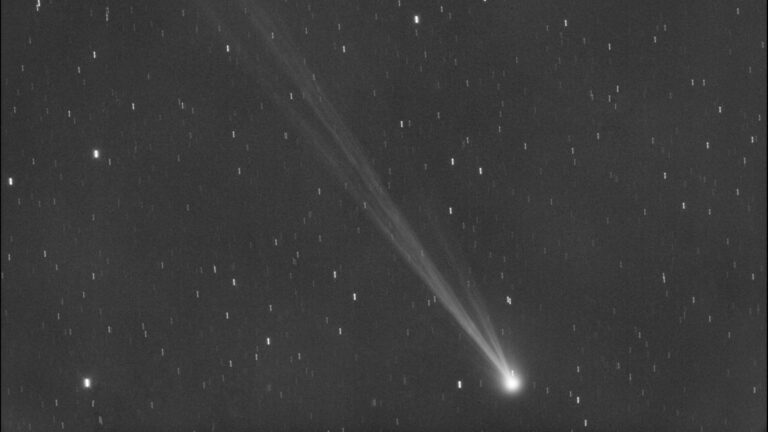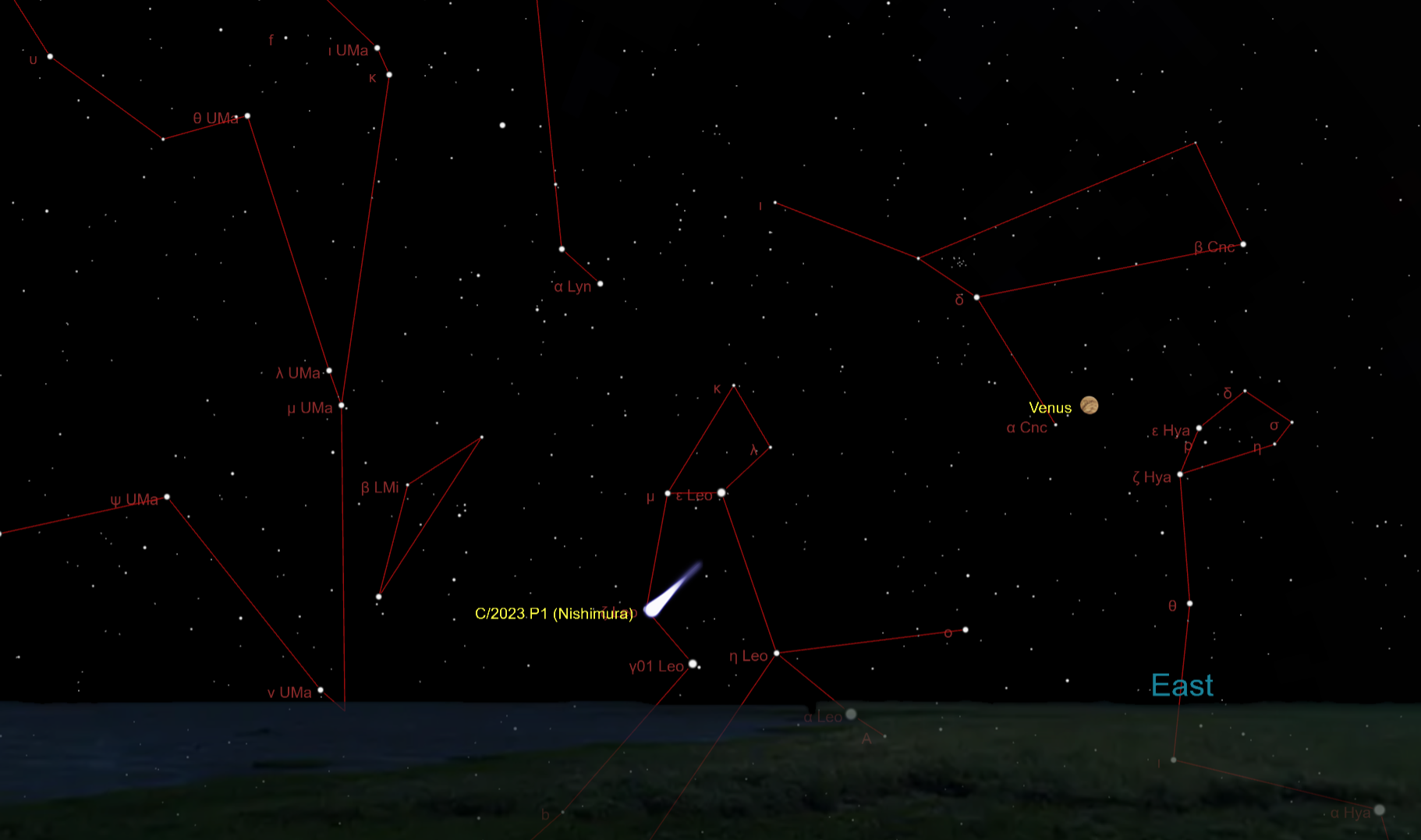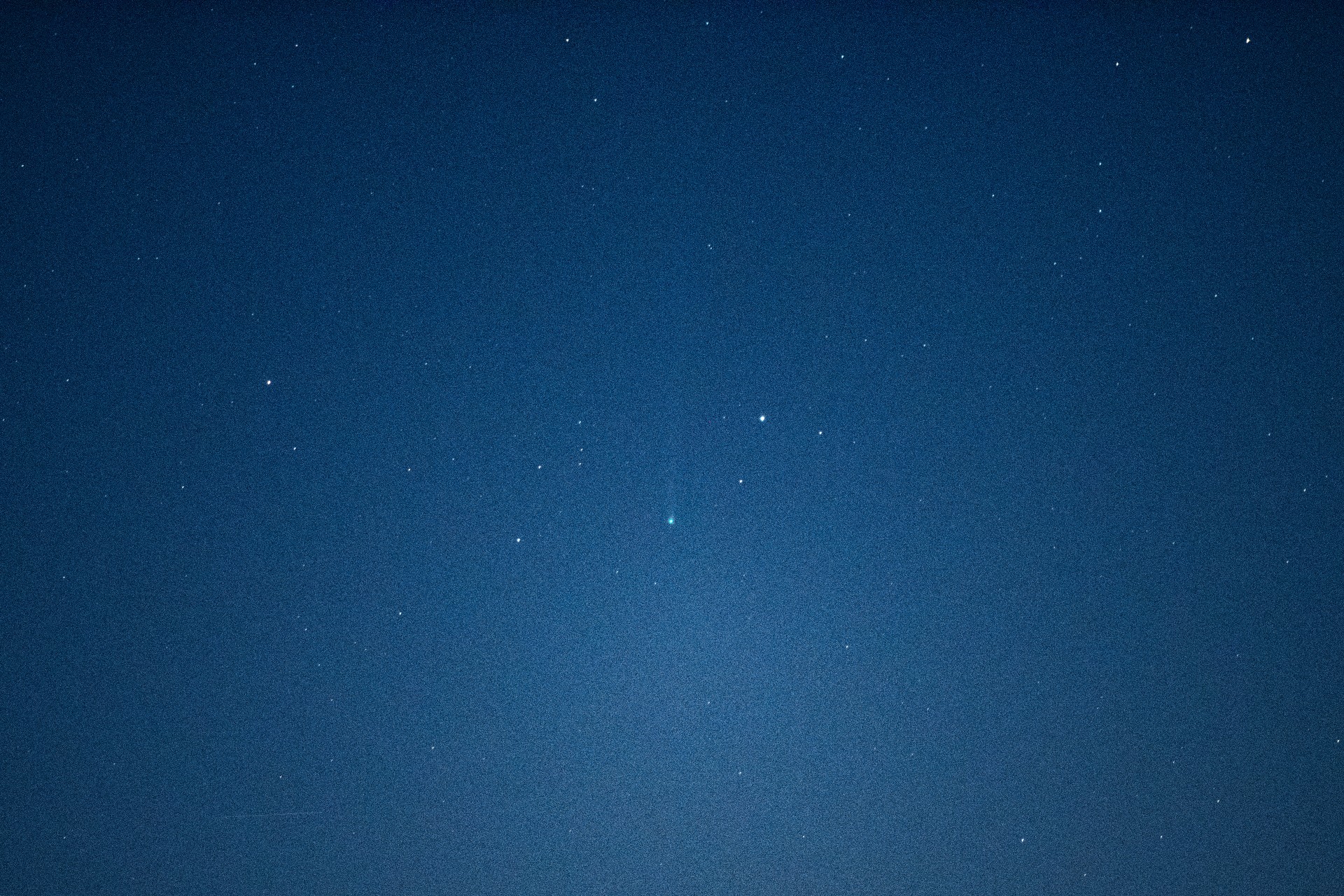
[ad_1]
Astrophotographers worldwide have been snapping incredible photos of Comet Nishimura as it makes its way through the solar system.
The comet was discovered in August 2023 by amateur astronomer Hideo Nishimura of Kakegawa City, Japan using a Canon DSLR camera with a telephoto lens. Discovering a comet using an off-the-shelf camera is quite an accomplishment, as most new comets these days are discovered with automated telescopes such as the Panoramic Survey Telescope & Rapid Response System, or Pan-STARRS, in Hawaii.
For the past few weeks, comet-hunters and astrophotographers worldwide have been following the progress of Comet Nishimura, capturing some incredible images in the process.
Related: Will newfound Comet Nishimura really be visible to the naked eye? Experts aren’t so sure
The next few weeks should be promising for spotting Comet Nishimura. The ball of ice and dust is approaching its closest point to Earth, which it will reach on Sept. 12 before arriving at what’s known as perihelion, its closest approach to the sun, on Sept. 17. The comet is currently making its way through the Leo constellation in the early morning hours before sunrise.
To see the spectacle, look to the east during predawn hours; a stargazing app might be your best bet to help you locate the comet, while binoculars or a telescope should help you access a solid view of it. Through binoculars or small-to-medium-sized telescopes, expect to see a fuzzy, greenish orb, but with more high-powered optics, you should be able to resolve the comet’s tail.

Notable comet hunter Michael Jäger, of Austria Jäger, has captured a plethora of breathtaking images of Comet Nishimura throughout September so far. Earlier this month, Jäger even caught the comet lose its tail in what is known as a disconnection event due to an outburst of solar wind.
Comet C/2023 P1 (Nishimura): Such a strong solar wind. The disconnection event on September 2nd – the spectacular development in a 20-minute animation (RASA 11 QHY600) and 4x80sec red Michael Jäger pic.twitter.com/qf43YqhBblSeptember 2, 2023
A few days later on Tuesday (Sept. 5), Jäger photographed the comet after having “regrown” a well-pronounced tail.
C/2023 P1 (Nishimura) 2023 sep 5 GIF Animation 2.27 UT 35min 16″/3.2 HyPA Moravian G3-16200 2x2bin, Michael Jäger pic.twitter.com/RnOPSmKnzGSeptember 5, 2023
Nick Bull, otherwise known as Stonehenge Dronescapes, posted a photo to X (formerly known as Twitter) of the comet in the skies over Stonehenge on Sept. 6, perfectly framed above the prehistoric stone monument.
Newly discovered Comet P1 Nishimura over Stonehenge ☄️🌟✨ Photo credit Stonehenge Dronescapes on FB 🙏 #comet #cometp1nishimura #stonehenge #astrophotography pic.twitter.com/CWXzEmJYtiSeptember 6, 2023
Amateur astronomer Stuart Atkinson caught these colorful images of Comet Nishimura on Sept. 5, showing a clearly defined fork in the comet’s tail.
Ran my comet images from this morning through Deep Sky Stacker and they’re ok, nothing special. I think the bright background sky/moonlight/slight murkiness have softened the view of the comet. Still, they show the split tail so I’m pleased with that. pic.twitter.com/4IQeEbgWZwSeptember 5, 2023
This image taken on Sept. 7 by Lorenzo Di Cola, from L’Aquila, Italy, offers a more grounded depiction of what backyard skywatchers can expect to see through binoculars or small telescopes when observing Comet Nishimura.

Want to hunt for your own comet in the night skies or get a good look at Comet Nishimura while it’s still visible? Check out our guide to the best binoculars could help you find some nice wide-angle optics for taking in larger areas of the sky.
Or, if you want to take a closer look at comets or anything else, our guide to the best telescopes can help you find the gear you need.
And if you’re looking to take photos of these celestial objects or the night sky in general, check out our guide on how to photograph comets, as well as our best cameras for astrophotography and best lenses for astrophotography.
Editor’s Note: If you snap an image of Comet Nishimura and would like to share it with Space.com’s readers, send your photo(s), comments, and your name and location to [email protected].
[ad_2]